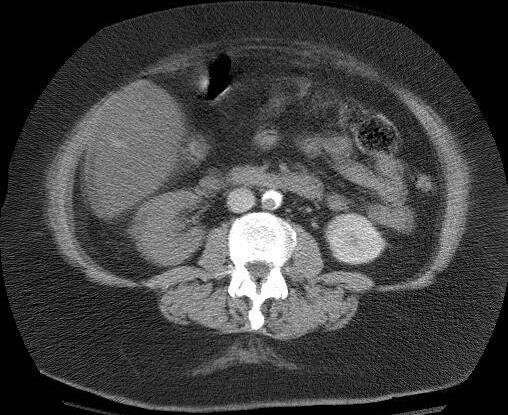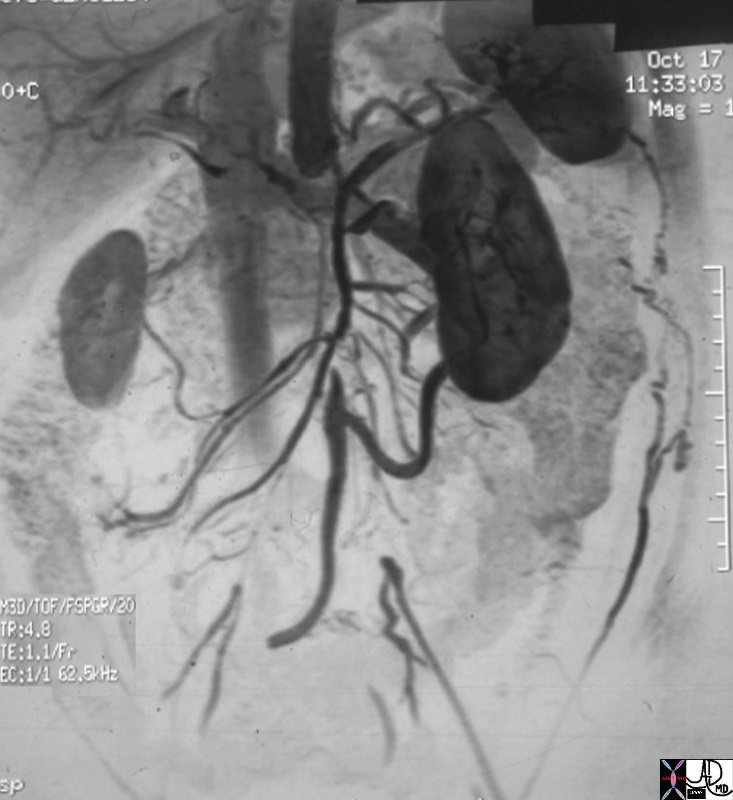| Occlusion of the Aorta
The Common Vein Copyright 2008 Definition Occlusion of the aorta implies a total obstruction of bllod flow. It may be acute or chronic. Acute Aortic Occlusion Acute aortic occlusion is most commonly caused by an embolus, thrombosis on stenotic atherosclerotic disease or by extension of an aortic dissection. Acute occlusion on t atherosclerotic disease is also called Leriche’s syndrome. Other causes include iatrogenic occlusion due to catheter manipulation, hypercoaguable disease, and malignancy. The result is acute ischemia of the distal organs, most commonly the lower limbs, so that pain parasthesias, pallor, pulslessness and paralysis (5p’s) are clinical manifestations. Leriche’s syndrome is characterized by absence of femoral pulses, pain in the legs or buttocks, and impotence and is characteristically seen in young males. Diagnosis is usually suspected by the clinical presentation and is confirmed by ultrasound or CT scan.
Treatment is urgent and emergency embolectomy is usually the quickest and most effective method. Thrombolytics can also be employed if the clinical situation is not deemed emergent. Chronic Aortic Occlusion Chronic occlusion of the aorta is usually caused by progressive stenotic and atherosclerotic disease of the distal abdominal aorta. The slow progressive nature of the disease usually allows collateral supply from mesenteric intercostal and lumbar vessels todevelop so theat the result is relatively benign and may even be an incidental finding. The diagnosis may be suspected clinically by reduced femoral pulses but CTscan or MRI would confirm the clinical suspicion. compenastaion.
In the asymptomatic patient no treatment is required, but bypass is indicated if there is concern about distal ischemia.
|

 Non Occlusive Thrombus in the Aorta Caused by a Paradoxical Embolus
Non Occlusive Thrombus in the Aorta Caused by a Paradoxical Embolus